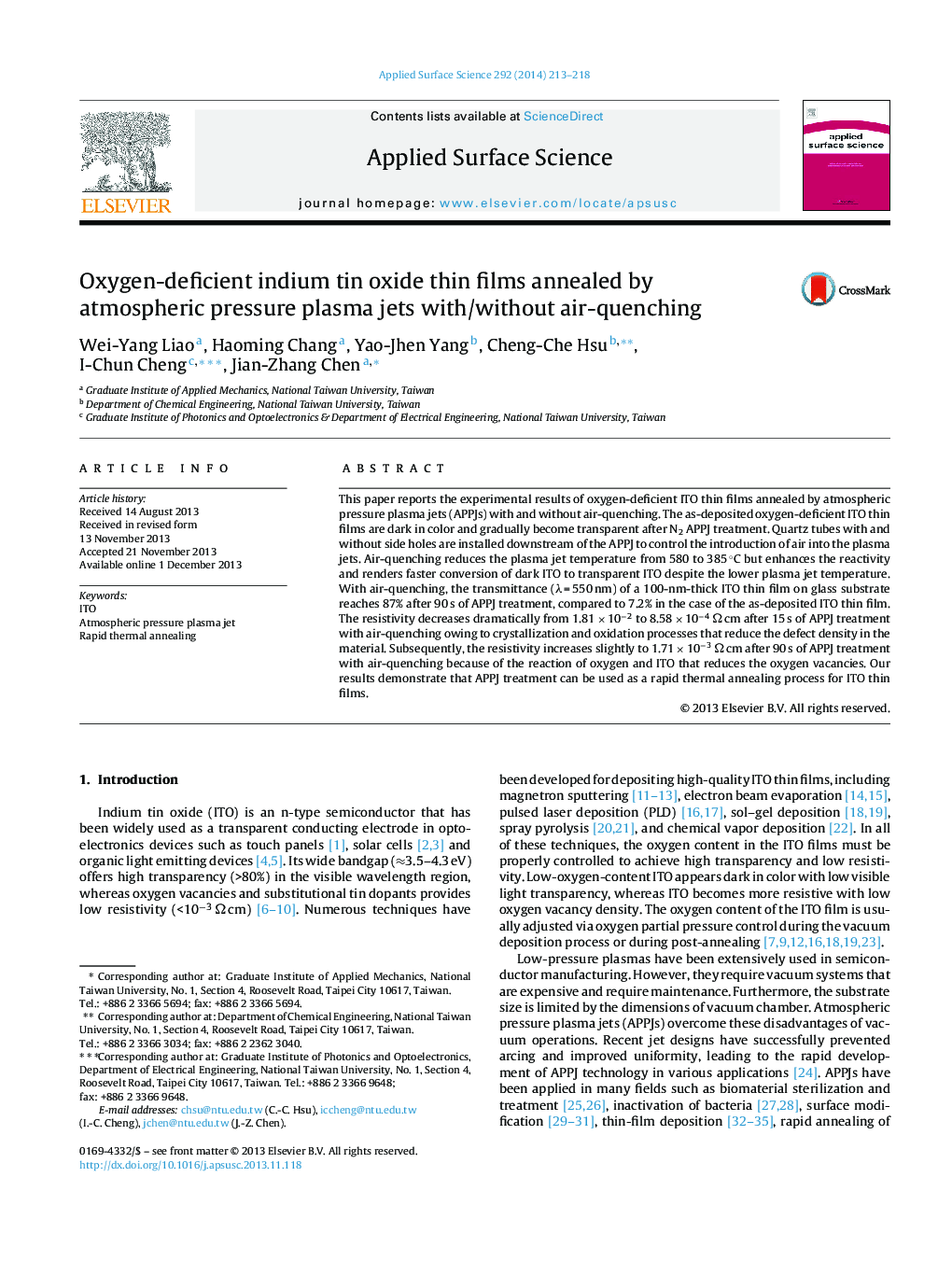| Article ID | Journal | Published Year | Pages | File Type |
|---|---|---|---|---|
| 5353341 | Applied Surface Science | 2014 | 6 Pages |
Abstract
This paper reports the experimental results of oxygen-deficient ITO thin films annealed by atmospheric pressure plasma jets (APPJs) with and without air-quenching. The as-deposited oxygen-deficient ITO thin films are dark in color and gradually become transparent after N2 APPJ treatment. Quartz tubes with and without side holes are installed downstream of the APPJ to control the introduction of air into the plasma jets. Air-quenching reduces the plasma jet temperature from 580 to 385 °C but enhances the reactivity and renders faster conversion of dark ITO to transparent ITO despite the lower plasma jet temperature. With air-quenching, the transmittance (λ = 550 nm) of a 100-nm-thick ITO thin film on glass substrate reaches 87% after 90 s of APPJ treatment, compared to 7.2% in the case of the as-deposited ITO thin film. The resistivity decreases dramatically from 1.81 Ã 10â2 to 8.58 Ã 10â4 Ω cm after 15 s of APPJ treatment with air-quenching owing to crystallization and oxidation processes that reduce the defect density in the material. Subsequently, the resistivity increases slightly to 1.71 Ã 10â3 Ω cm after 90 s of APPJ treatment with air-quenching because of the reaction of oxygen and ITO that reduces the oxygen vacancies. Our results demonstrate that APPJ treatment can be used as a rapid thermal annealing process for ITO thin films.
Related Topics
Physical Sciences and Engineering
Chemistry
Physical and Theoretical Chemistry
Authors
Wei-Yang Liao, Haoming Chang, Yao-Jhen Yang, Cheng-Che Hsu, I-Chun Cheng, Jian-Zhang Chen,
